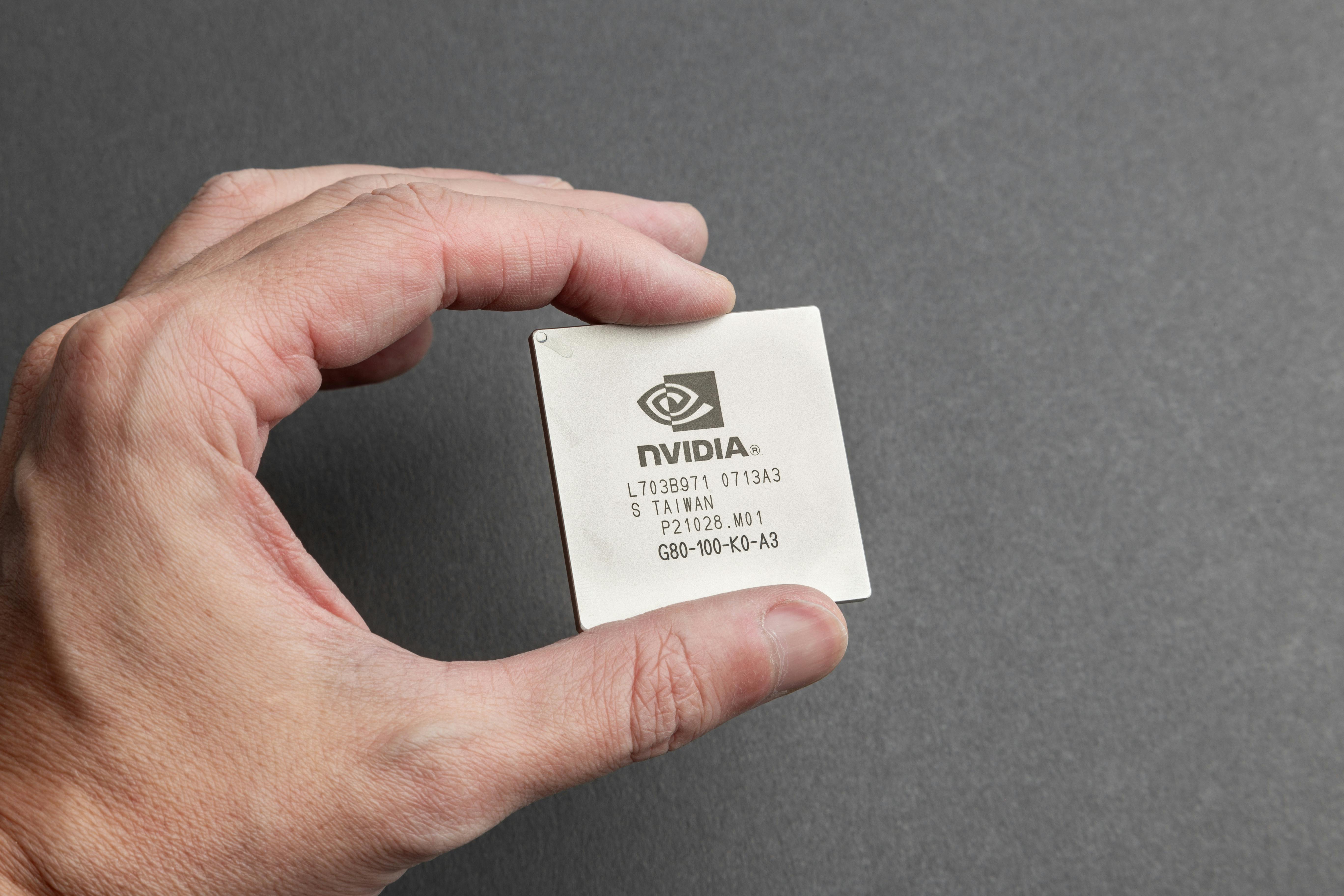The Best Artificial Intelligence (AI) Stock to Hold in Uncertain Times: A November 2025 Analysis

Navigating the current financial landscape requires a strategic lens, particularly within the high-growth, yet highly dynamic, sector of Artificial Intelligence. As of November 14, 2025, the economic outlook is one of cautious optimism, where massive committed capital expenditure intersects with intensifying geopolitical competition. To determine the best AI stock holding for uncertain times, one must assess which companies possess the most resilient moats—those built on essential infrastructure, entrenched enterprise ecosystems, or indispensable manufacturing technology.
The Macroeconomic Backdrop: Why Uncertainty Dictates AI Stock Selection
The scale of the AI revolution is best measured by the capital required to sustain it—a systemic overhaul of computational infrastructure comparable in magnitude to the early days of electricity or the internet. This realization demands substantial upfront expenditure in physical, digital, and human capital, a commitment reflected in staggering financial projections.
Global Capital Flows and Trillion-Dollar Spending Projections
The investment thesis for AI is cemented by the sheer volume of money being channeled into the sector. Projections indicate that global AI spending is set to increase by approximately 37% year-over-year in 2026, rising from a record high of an estimated $1.48 trillion in 2025 to cross the $2 trillion mark, potentially reaching $2.02 trillion. This immense financial commitment is primarily directed toward AI infrastructure, encompassing robust data center capacity, advanced chip development, and scalable cloud capabilities. In times of market anxiety, assets backed by visible, committed, and escalating capital expenditure—the race for compute capacity—often prove to be the most defensible holdings.
Geopolitical Factors Influencing Technology Sovereignty
Uncertainty is profoundly compounded by geopolitical maneuvering. As global influence increasingly ties to computing power, nations are actively seeking technological sovereignty through strategic moves to secure domestic chip manufacturing and establish sovereign AI projects. The concentration of advanced chip manufacturing in a few players remains a focal point of international tension, with the United States, for instance, explicitly restricting the sale of its “crown jewel” Blackwell chips to China as of November 2025. The ideal holding must demonstrate either an unassailable technological lead or a strategic alignment with these powerful national interests, positioning companies that can satisfy domestic mandates or secure government partnerships advantageously.
Candidate One: The Infrastructure Titans – Bets on Foundational Growth
The most direct path to profiting from the AI expansion is investing in the suppliers of the essential, non-substitutable components powering computational engines—the “picks and shovels” of this era. This layer is dominated by chip designers/manufacturers and the cloud service providers who own the data centers.
Nvidia’s Hardware Dominance and Supply Chain Strengthening
Nvidia Corporation remains the benchmark for hardware leadership, with its advanced chips serving as the de facto standard for large-scale AI model training and inference. The company’s strategy in late 2025 involves mitigating geopolitical risk while capitalizing on its technological lead. Following strong Q3 FY2026 earnings reported in August 2025, the focus remains on the Blackwell platform. While the company has warned of impacts from China export restrictions (which prevent the sale of the newest Blackwell chips), it has concurrently secured U.S. approval for high-end AI chip exports to the UAE and announced a $2 billion investment in Elon Musk’s xAI in October 2025. Its deep hardware entrenchment offers a powerful, if politically complex, moat against immediate disruption, as its chips are the fundamental substrate for the entire ecosystem.
The Critical Role of Cloud Hyperscalers in Compute Expansion
Cloud computing platforms are the primary delivery mechanism for AI services. Companies like Microsoft and Alphabet control the scalable infrastructure upon which thousands of businesses build their AI applications. This dependency ensures that as AI adoption scales—with high-performing organizations dedicating over 20% of digital budgets to AI—demand for hyperscale compute escalates. These providers ensure a durable, recurring revenue stream tied directly to the growth rate of the global AI workload, with capital expenditure from the major hyperscalers accelerating significantly in 2025.
Candidate Two: The Model and Service Integrators – Capturing End-User Value
This category focuses on companies that successfully integrate AI models into vast, pre-existing user bases and enterprise software suites, immediately monetizing AI capabilities through distribution and application layers.
Alphabet’s Vertical Integration: Models, TPUs, and Distribution Advantage
Alphabet, the parent of Google, presents a compelling case for a fully integrated leader, controlling its own models, custom silicon, and global distribution. Analysts view it as exceptionally positioned due to its end-to-end control over the AI stack. The company is rapidly integrating its Gemini family of models across ubiquitous products like Search, with Maps integration occurring in November 2025. Critically, Alphabet develops its own Tensor Processing Units (TPUs); the company announced the Ironwood (TPU v7) chip in November 2025, claiming it is 4x faster than the TPU v6e for inference. Its massive Q3 2025 CapEx guidance update to $91 billion–$93 billion for 2025 underscores its funding for this infrastructure race. The market awaits the “imminent rollout of Gemini 3.0,” a potential inflection point for sentiment.
Microsoft’s Strategic Partnerships and Enterprise Ecosystem Lock-in
Microsoft offers a potent proposition by embedding AI directly into the productivity suite that organizations worldwide depend upon, leveraging its dominance in enterprise software. The company’s strategic alliance with OpenAI remains central. Following a late-October 2025 restructuring, OpenAI committed to an incremental $250 billion in Azure cloud services, a massive commercial win for Microsoft, though exclusivity on compute is gone. However, Microsoft secured key advantages: retaining exclusive IP rights and Azure API exclusivity until Artificial General Intelligence (AGI) is declared and verified. Furthermore, Microsoft CEO Satya Nadella confirmed that third-party OpenAI products must exclusively run on Azure, ensuring Microsoft captures a significant portion of the compute consumption tied to OpenAI’s ongoing development and deployment. This dual control over the enterprise interface and a critical segment of the infrastructure layer provides exceptional stability.
Candidate Three: The Unsung Enablers – The “Picks and Shovels” of the AI Gold Rush
For investors seeking to avoid the direct competition between model developers and cloud giants, the most resilient bet often lies with firms providing the specialized equipment required to build the chips and infrastructure, as their success is tied to the industry’s fundamental need for more advanced manufacturing.
Applied Materials: Manufacturing the Next Generation of Semiconductor Systems
Applied Materials (AMAT) stands out as the ultimate “pick-and-shovel” play in semiconductor equipment. It manufactures the critical deposition, etching, measurement, and packaging systems necessary for all major chip fabricators. The company reported its Q4 2025 results on November 13, 2025, revealing that despite a softer near-term outlook due to China trade restrictions (China accounted for 25% of Q4 revenue), the dominant catalyst—AI-driven chip demand—remains strong. For the full fiscal year 2025, AMAT achieved a non-GAAP gross margin of 48.8%, its highest in 25 years. The company forecasts higher demand beginning in the second half of the 2026 calendar year, positioning it to benefit from the entire industry’s need for greater chip density driven by AI.
Micron Technology and the High Bandwidth Memory Bottleneck
A specific, current bottleneck in the AI chain is memory, particularly High Bandwidth Memory (HBM), essential for feeding data to AI accelerators. Micron Technology is positioned as a major supplier. The company reported record revenue of $9.30 billion in its fiscal third quarter of 2025, driven by an almost 50% sequential increase in HBM revenue. Data center revenue more than doubled year-over-year, reaching a record high. Micron is projected to match its overall DRAM market share of approximately 22-23% in the HBM market share by calendar 2025. Holding a stock focused on solving a demonstrable, current bottleneck in high-performance computing, like HBM supply, offers a targeted play on the theme, though cyclical memory risks must be acknowledged.
Sectoral Implications and Broader AI Developments Shaping Long-Term Value
The best long-term holding must be resistant to shifts in how AI is applied across the economy, positioned to benefit from the *next* wave of applications.
The Rise of Agentic AI and Autonomous Workflows
A significant, emerging trend in 2025 is the focus on Agentic AI—virtual coworkers capable of autonomously planning and executing complex, multi-step workflows. This moves beyond content generation to active task execution, promising profound impacts on operational efficiency. The momentum is clear: 79% of U.S. executives report their companies are adopting AI agents, and 88% plan to increase AI budgets in the next 12 months. The market for agentic AI tools is projected to reach $10.41 billion in 2025. The goal is to move from horizontal “copilots” to vertical, outcome-tied workflows embedded in core enterprise systems like CRM and ERP.
The Transformative Power of Generative AI Beyond Initial Hype
Generative AI continues to advance, with new models demonstrating sophisticated reasoning and tool use. The technology is broadening its application into niche areas like personalized education and automated software development, suggesting a democratization of high-performance AI capabilities. A top-tier holding must show mastery over foundational models while demonstrating a clear, scalable path to monetizing these capabilities across diverse industrial applications, as the move towards intelligent automation is expected to manage tasks end-to-end with minimal human intervention.
The Regulatory Tightrope: Governance and Ethical AI Practices
Uncertainty also arises from the regulatory environment. As AI becomes more powerful, global governance, ethics, and transparency are paramount. The EU’s AI Act, adopted in 2024, sets a global, risk-based precedent, with high-risk applications facing the toughest scrutiny. Countries like India are also establishing new oversight and pre-approval regimes for generative AI tools. For an investment to be truly resilient, it must navigate this landscape adeptly. Proactive adoption of Explainable AI (XAI) and commitment to strong ethical practices are becoming critical differentiators, earning the trust necessary for durable market share.
Risk Mitigation in the AI Thematic Play: Beyond the Hype Cycle
Holding an AI stock through uncertainty requires acknowledging cyclical risks and ensuring valuations are tethered to tangible future productivity, not just speculative growth.
Understanding Cyclicality in Semiconductor Memory Markets
The memory segment, exemplified by Micron, carries inherent cyclical risk, historically prone to boom-and-bust cycles. While HBM demand has created a significant tailwind in 2025, any moderation in the pace of AI adoption could cause inventory pile-ups for component manufacturers. Therefore, a stock heavily reliant on this sub-segment requires a clear leadership position in next-generation memory like HBM to justify its position as the *best* holding during volatility.
Assessing Valuation Metrics Against Future Productivity Gains
Valuation remains a perpetual source of uncertainty. While AI leaders command high multiples, investors must weigh these prices against potential productivity gains. For instance, Nvidia was recently cited trading at a forward price-to-earnings ratio of 28.1, a figure that implies a significant future share price increase is necessary just to maintain that multiple. In contrast, other specialized AI growth stocks were noted with forward P/E ratios as high as 181. The optimal holding is one where the current price only partially reflects the inevitable, broad-based economic uplift that economists predict AI will deliver to global productivity over the coming decade.
Conclusion: Formulating a Resilient AI Portfolio Strategy for the Coming Decade
The best artificial intelligence stock to hold through the coming period of uncertainty is one that offers multi-layered exposure to the AI “super theme” while possessing a structural moat that transcends short-term cycles. The analysis points toward companies that are structurally essential to the next iteration of global economic activity.
Diversification Within the AI Ecosystem
The wisest strategy acknowledges that AI’s industrialization is defined by hard realities: computing power, energy, and data. No single company perfectly dominates all facets. Therefore, the most prudent approach involves selecting a core holding that sits atop the stack—either through unassailable hardware manufacturing (like Nvidia), or through supreme vertical integration and distribution (like Alphabet). Both models have demonstrated significant financial commitments and strategic alignment to national interests, ensuring they possess significant levers regardless of which specific application proves to be the breakout commercial success.
Long-Term Conviction Versus Short-Term Trading Volatility
Ultimately, holding an AI stock through uncertainty requires moving beyond daily fluctuations driven by quarterly earnings or political headlines. The technology’s impact is best measured across a decade, akin to foundational shifts caused by electricity or the personal computer. The best stock to hold is the one that can fund perpetual research and capital expenditure from current cash flows, ensuring preparation for the next technological leap, whether involving agentic systems or new computational paradigms. The most successful businesses in the future will fundamentally be those that master the harnessing of this technology, making alignment with the infrastructure and core platforms essential for any resilient portfolio.










